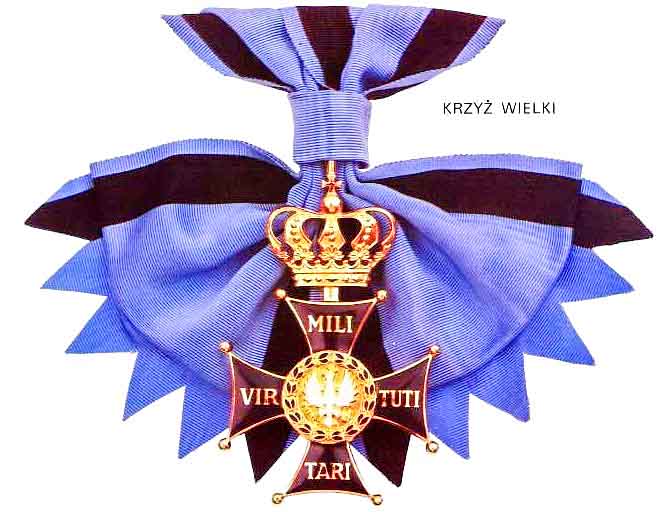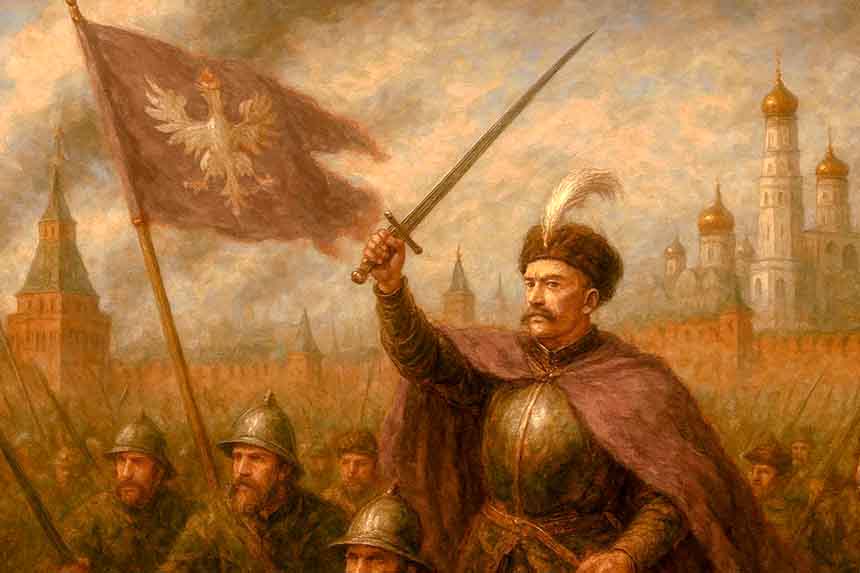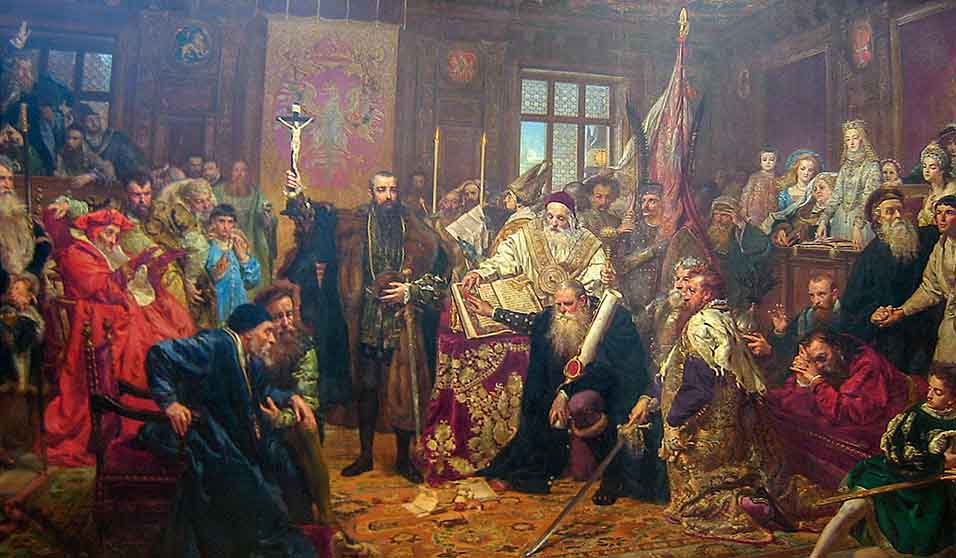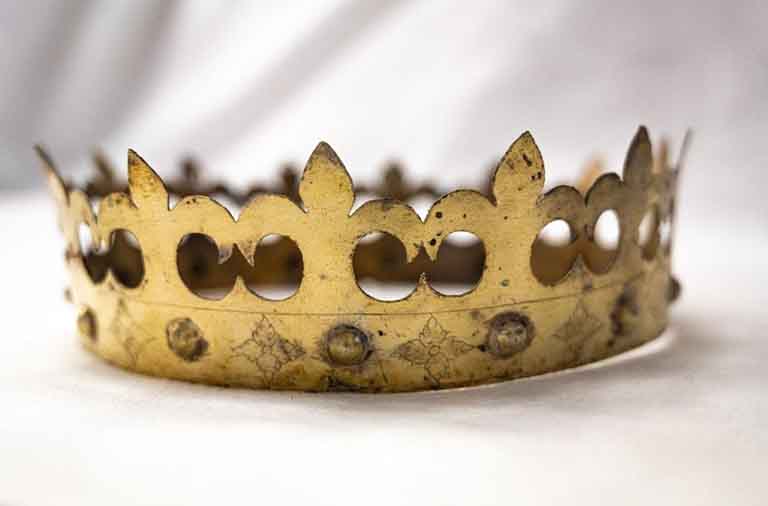On June 22, 1792, King Stanisław August Poniatowski established a new decoration – the Virtuti Militari military order , which literally translates from Latin as: Military Virtue.
The idea behind awarding this unique distinction was to reward meritorious service during military operations on the battlefield. The circumstances surrounding the award's establishment are directly linked to one of the victories during the Polish-Russian War. On June 18, 1792, Polish forces commanded by Prince Józef Poniatowski, nephew of King Stanisław August, defeated the Russians at the Battle of Zieleńce. The Polish forces numbered over 15,000 soldiers, while the Russians numbered approximately 11,000.
The dedication and heroism of Prince Józef's subordinates prompted him to propose to the king the establishment of a new military decoration. Furthermore, the battle was important politically, demonstrating that despite the unstable situation in the Polish-Lithuanian Commonwealth, a well-led army could defeat the Russian forces.
King Stanisław August accepted the proposal for the new order, and on June 22nd, the day the decoration was established, it was awarded to 15 soldiers. The decorations were made three days later, on June 25th, in Ostróg, Volhynia, where Polish troops were stationed. The first to receive this honor included Prince Józef Poniatowski, General Tadeusz Kościuszko, and Generals Stanisław Mokronowski, Eustachy Sanguszko, Józef Zajączek, and Michał Wielhorski.
Shortly thereafter, the order was divided into five classes: the Grand Cross with Star, the Commander's Cross, the Knight's Cross, the Gold Medal, and the Silver Medal. During the reign of Stanisław August Poniatowski, the decoration was awarded to over 500 individuals.

Grand Cross of the Order of Virtuti Militari (Source: Wikipedia)
The first version of the order was designed by a medalist Jan Filip Holzhaeusser, and the pieces were minted by the Warsaw Mint. Initially, the order was oval in shape, clearly engraved with the three letters SAR, the Latin abbreviation for Stanislaus Augustus Rex. Above the inscription was the symbol of a royal crown, and at the bottom were two palm branches. The reverse of the order bore the inscription "Virtuti Militari." The design of the order was quickly changed. At the turn of August and September 1792, the order took the shape of a cross. This design remains in use today, in the form adopted before World War II, in 1933. The word "Virtuti" appears on the horizontal arms of the order, while "Militari" appears on the vertical arms. The colors of the cross arms also vary depending on the class of the order. In the central part of the decoration there is an Eagle in its shape from 1792. On the reverse side there is an inscription "Honor and Fatherland" with the date 1792 added.
Interestingly, very quickly, at the end of August 1792, the Targowica people banned the wearing of the order. Failure to comply with the ban was punishable by fines. In early January 1794, the Permanent Council abolished the decoration, which was reinstated in 1806. In January 1832, Tsar Nicholas I of Russia decided to downgrade the order to the "Polish Badge of Honour for Military Merit." The Virtuti Militari only regained its status in the Second Polish Republic. By a decision of the Legislative Sejm in August 1919, it once again became a military order, operating in five classes: the Grand Cross with Star, the Commander's Cross, the Knight's Cross, the Gold Cross, and the Silver Cross.
The order existed at various periods in Polish history, including during the partitions, the Second Polish Republic, World War II, and the communist dictatorship. Therefore, depending on the period, it was awarded by different individuals. The awarding of the order came with additional benefits. Depending on the period, these included an annual salary, a lifetime pension, priority in land allocation or applying for government positions, discounts on rail travel, medical treatment at state expense, and so on.
The Virtuti Militari was also awarded to cities, such as Lviv in 1920 and Warsaw in 1939. The ship ORP Błyskawica was also decorated. Among those awarded this unique order was the Soviet dictator, First Secretary of the Communist Party of the Soviet Union, Leonid Brezhnev, who was awarded it by the authorities of the Polish People's Republic. This was met with a symbolic gesture of protest by the Knights of the Virtuti Militari decorated before the war, who in 1976 laid down their orders at Jasna Góra, before the altar of Our Lady of Częstochowa.
After the fall of the communist system, no one was awarded the Virtuti Militari, but several individuals were stripped of it, including the aforementioned Brezhnev and Ivan Serov. The order can only be awarded for military merits during the war or no later than five years after its end. In total, 26,000 people were honored with the Virtuti Militari. The first woman to receive the order was Joanna Żubr, a sergeant in the army of the Duchy of Warsaw, and the youngest was Antoni Petrykiewicz, a 13-year-old boy who defended Lviv in 1918 and died of his wounds on January 14, 1919.
Translation from Polish by ANdrew Wozniewicz.









